Creating a DIY vertical garden is a fantastic way to bring some greenery into your home or office, even with limited space. A vertical garden wall not only adds aesthetic appeal but also purifies the air and can even provide fresh produce.
With the right guidance, you can transform a blank wall into a lush, thriving garden. Our step-by-step guide will walk you through the process, from planning to maintenance, ensuring you have all the information you need to succeed.
Whether you’re looking for vertical garden wall ideas or a straightforward DIY project, this guide is designed to be friendly and accessible, making it easy for anyone to create their own vertical garden.
Key Takeaways
- Learn the benefits of having a vertical garden wall.
- Understand the step-by-step process of creating a DIY vertical garden.
- Discover tips for maintaining your vertical garden.
- Explore different vertical garden wall ideas for inspiration.
- Get started with your own DIY vertical garden project.
The Beauty and Benefits of Vertical Gardens
Vertical gardens are revolutionizing urban spaces, offering a multitude of benefits for both the environment and homeowners. These innovative gardens are not only aesthetically pleasing but also provide practical solutions for urban living.
Space-Saving Solutions for Urban Gardeners
For urban gardeners, vertical garden walls offer a space-saving solution that maximizes available space. By utilizing walls, individuals can create lush gardens even in the most compact environments. This approach is particularly beneficial in urban areas where space is limited.
Some popular vertical garden wall ideas include using trellises, pocket planters, and modular systems. These designs not only add greenery to urban landscapes but also enhance the visual appeal of buildings.
Environmental and Health Benefits
Vertical gardens also provide significant environmental benefits, including improved air quality and reduced urban heat island effects. By incorporating plants into urban environments, we can mitigate some of the negative impacts of urbanization.
A comparison of the benefits of vertical gardens is presented in the following table:
| Benefits | Description | Impact |
|---|---|---|
| Air Quality Improvement | Plants absorb pollutants and produce oxygen | Healthier living environment |
| Urban Heat Island Mitigation | Plants provide shade and cool the air through evapotranspiration | Reduced energy consumption |
| Aesthetic Enhancement | Vertical gardens add visual appeal to buildings and public spaces | Increased property values |
Planning Your Vertical Garden Wall Project
Before you start building your vertical garden wall, it’s essential to plan carefully to ensure success. A well-planned project not only enhances the aesthetic appeal of your space but also ensures the longevity and health of your garden.
Assessing Your Space and Light Conditions
Start by assessing the space where you plan to install your vertical garden wall. Consider the amount of light the area receives, as this will dictate the types of plants you can grow. Most plants require at least 4-6 hours of direct sunlight per day. If your space receives less light, consider using grow lights or choosing plants that thrive in low-light conditions.
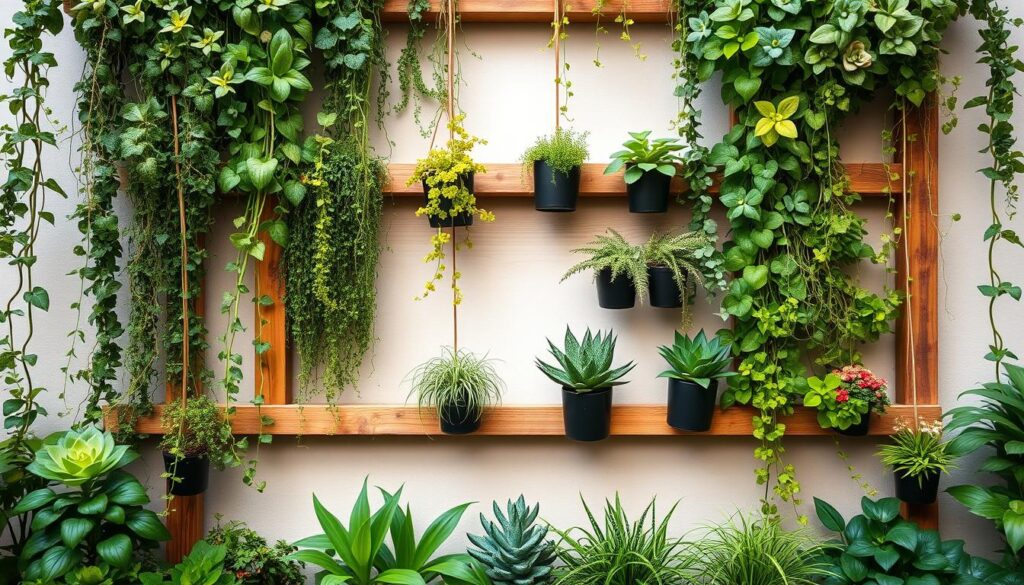
Determining Your Budget
Next, determine your budget for the project. This includes the cost of materials such as the frame, growing medium, plants, and irrigation system. Setting a budget will help you make decisions about the scale and complexity of your vertical garden. Consider budget-friendly vertical garden ideas like repurposing old pallets or using affordable planters.
| Material | Cost | Considerations |
|---|---|---|
| Frame | $50-$100 | Material (wood, metal, recycled) |
| Growing Medium | $20-$50 | Type (soil, coco coir, peat) |
| Plants | $30-$100 | Type and quantity |
Vertical Garden Wall Ideas for Inspiration
Finally, look for inspiration to guide your design. Browse online for vertical garden wall ideas, visit local gardens, or consult with a gardening expert. Consider the layout, plant selection, and additional features like irrigation systems or decorative elements to create a unique and thriving vertical garden.
Different Vertical Garden Wall Systems
Vertical garden wall systems come in a variety of designs, each with its own set of benefits and considerations. The choice of system depends on factors such as space, budget, and personal preference.
Pocket Systems
Pocket systems are a popular choice for vertical gardens. They consist of fabric or felt pockets attached to a backing, providing a simple and effective way to plant a variety of flora. These systems are ideal for small plants and herbs.
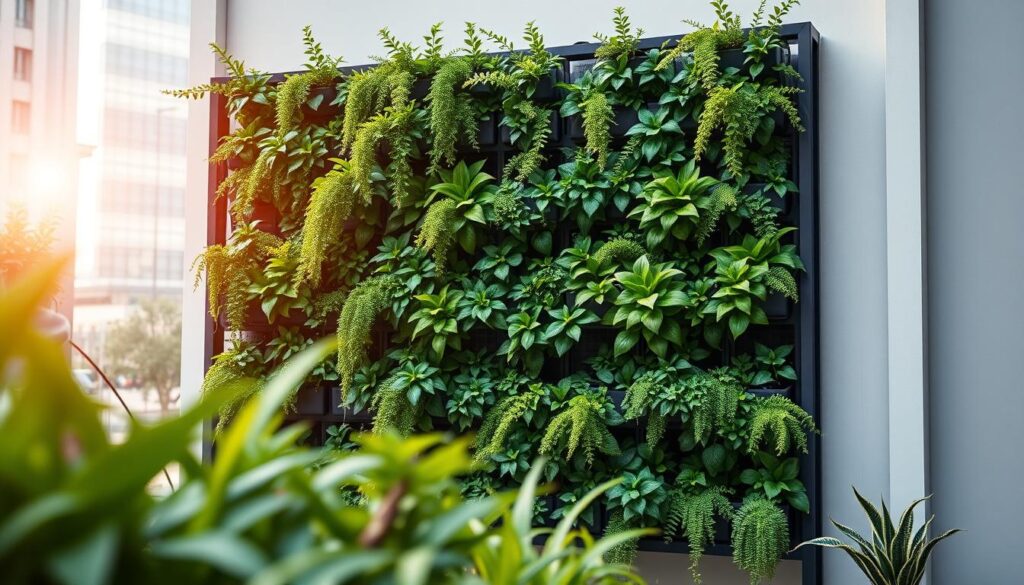
Panel and Modular Systems
Panel and modular systems offer a more structured approach to vertical gardening. They are typically made from materials like wood, metal, or recycled plastic and can be customized to fit specific spaces. These systems are versatile and can support a wide range of plant species.
Trellis and Climbing Systems
Trellis and climbing systems utilize vertical space by training plants to grow upwards. These systems are perfect for vining plants and can add a decorative element to the garden. They are also a great option for maximizing space.
In conclusion, the choice of vertical garden wall system depends on the specific needs and goals of the project. By understanding the different systems available, individuals can make informed decisions to create a thriving and beautiful vertical garden.
Essential Materials for Your Vertical Garden Wall
Creating a thriving vertical garden wall begins with selecting the right materials. The durability, aesthetic appeal, and overall health of your garden depend significantly on the materials you choose.
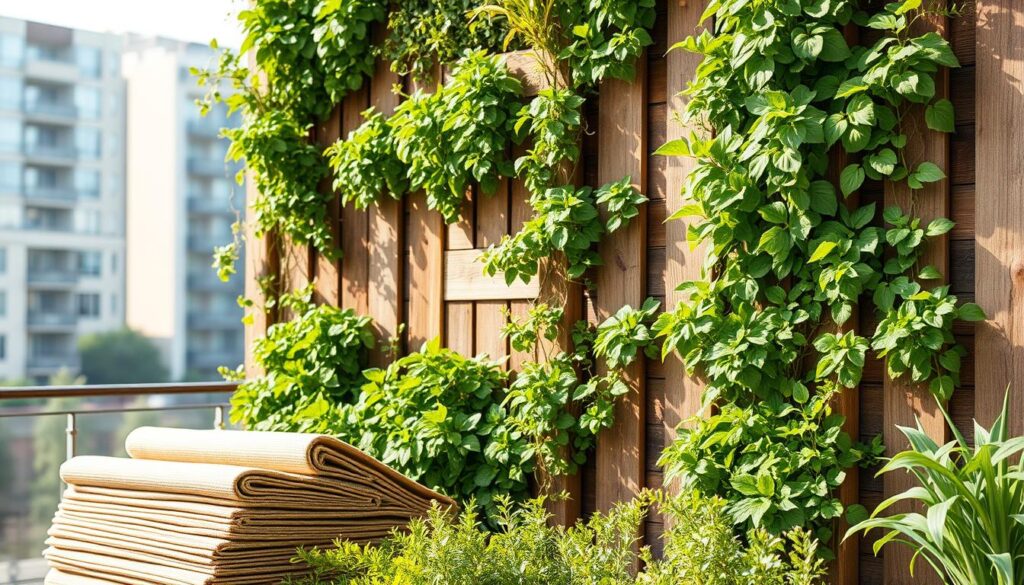
Structure and Support Materials
The structure and support materials form the backbone of your vertical garden. Common options include wooden frames, metal grids, and PVC panels. Wooden frames offer a natural look and can be durable if properly treated. Metal grids provide a modern aesthetic and excellent support for climbing plants.
Growing Medium Options
The growing medium is where your plants will root, so it’s crucial to select the right one. Popular options include soil, peat moss, and coconut coir. Soil is a traditional choice, but it can be heavy. Coconut coir is a sustainable alternative that retains moisture well, making it ideal for vertical gardens.
Vertical Garden Wall Materials Comparison
When choosing materials, it’s helpful to compare their characteristics. The table below summarizes key aspects of common materials used for vertical garden walls.
| Material | Durability | Cost | Aesthetic Appeal |
|---|---|---|---|
| Wood | High | Moderate | Natural Look |
| Metal | High | High | Modern |
| PVC | Moderate | Low | Versatile |
By carefully selecting the right materials for your vertical garden wall, you can ensure a beautiful and thriving garden for years to come.
Tools You’ll Need for Construction
A well-equipped toolkit is crucial for constructing a vertical garden wall that is both beautiful and functional. Having the right tools on hand will make the construction process smoother and more efficient.
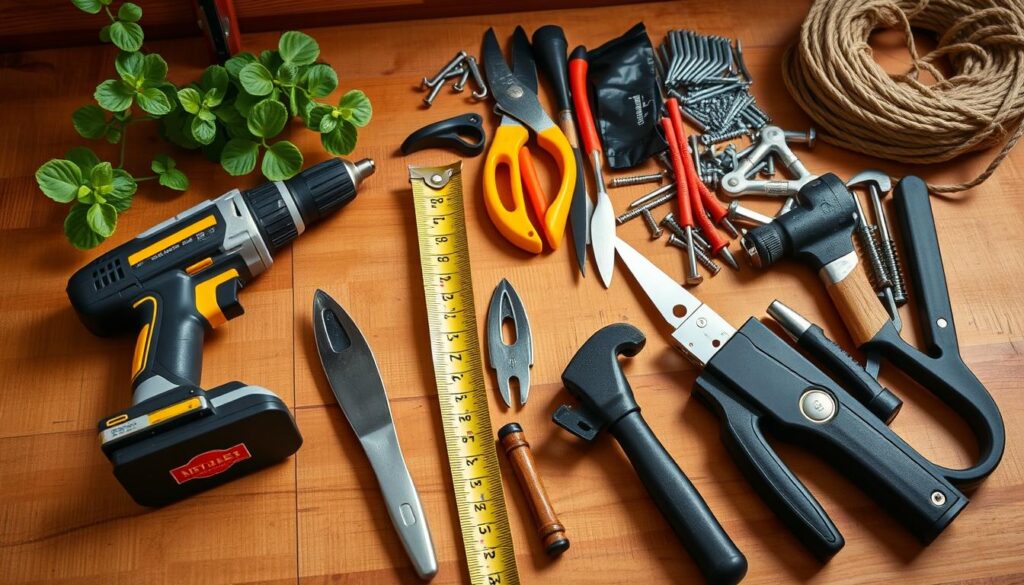
Basic Hand Tools
For most vertical garden wall projects, you’ll need a set of basic hand tools. These include a tape measure for measuring spaces and materials, a level to ensure everything is perfectly aligned, and a hammer for tapping pieces into place. You’ll also need a set of screwdrivers and pliers for handling various fasteners and wires.
Optional Power Tools
While basic hand tools can get you through most of the construction process, certain power tools can significantly speed up the work and improve precision. Power drills are invaluable for making holes for screws or other fasteners, and a circular saw can be used to cut lumber to the required sizes. If you’re planning to work with metal frames, a welding machine might be necessary.
It’s worth noting that while power tools can be very helpful, they are not always essential. The specific tools you need can vary depending on the design and materials you’ve chosen for your vertical garden wall.
How to Make a Vertical Garden Wall: Construction Process
A well-constructed vertical garden wall starts with a solid foundation and careful attention to detail. The construction process involves several critical steps that ensure the stability and longevity of your garden.
Building the Frame and Support Structure
The first step in constructing your vertical garden wall is building the frame and support structure. This is crucial for providing the necessary stability for your plants. Use durable materials like cedar or recycled plastic to create the frame. Ensure it is sturdy enough to hold the weight of the soil, plants, and any additional features like irrigation systems.
Key considerations when building the frame include:
- Measuring the space accurately to determine the size of the frame
- Using materials that are resistant to rot and insect damage
- Ensuring the frame is level and securely attached to the wall
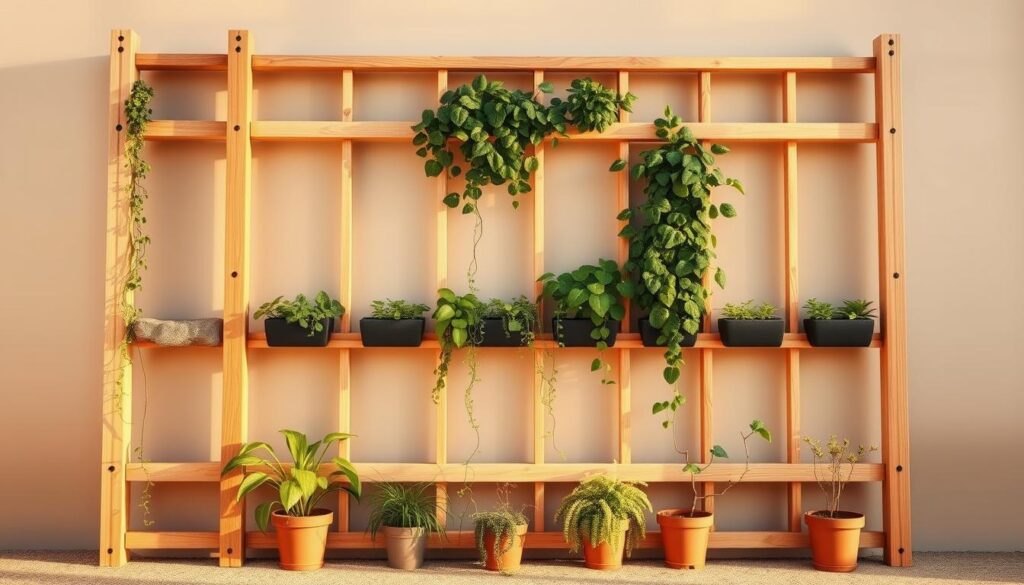
Installing the Backing and Moisture Barrier
Once the frame is in place, the next step is to install a backing and moisture barrier. This layer is essential for preventing water damage to the wall behind your vertical garden. Use a waterproof material like plastic or rubber for the moisture barrier. Attach a backing material, such as plywood or a landscape fabric, to provide additional support for the plants and soil.
As noted by gardening experts, a proper moisture barrier is crucial for the longevity of your vertical garden.
“A well-installed moisture barrier can significantly reduce the risk of water damage and associated maintenance costs.” – Gardening Expert
Creating Planting Pockets or Containers
The final step in the construction process is creating the planting pockets or containers. These will hold the soil and plants, so they need to be durable and well-ventilated. You can use fabric pockets, plastic containers, or even repurposed materials like old boots or wooden crates. Ensure that the pockets are securely attached to the backing and have adequate drainage holes to prevent waterlogging.
Tips for creating effective planting pockets include:
- Using materials that are breathable and allow for root growth
- Ensuring the pockets are not too deep, which can lead to waterlogging
- Spacing the pockets evenly to allow for proper plant growth and access for maintenance
By following these steps, you can create a beautiful and thriving vertical garden wall that enhances your space and provides a unique gardening opportunity.
Setting Up an Irrigation System
A well-designed irrigation system is crucial for the health and longevity of your vertical garden wall. It ensures that your plants receive the right amount of water, reducing the risk of overwatering or underwatering.
When it comes to irrigating your vertical garden, you have several options to consider. The choice of irrigation system depends on factors such as the size of your garden, the type of plants you’re growing, and your personal preference.
Drip Irrigation Options
Drip irrigation is a popular choice for vertical gardens because it’s efficient and minimizes water waste. This system delivers water directly to the roots of the plants, reducing evaporation and runoff. Drip irrigation kits are available, which include everything you need to set up the system, from tubes and emitters to filters and connectors.
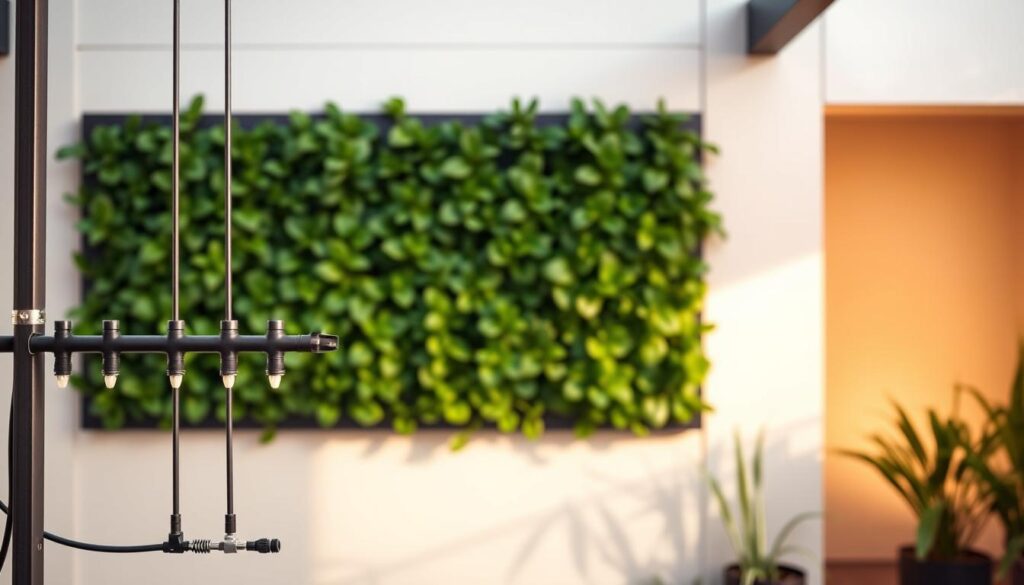
Manual Watering Considerations
While automated irrigation systems are convenient, manual watering is also a viable option, especially for smaller vertical gardens. When watering manually, it’s essential to check the moisture levels of the growing medium regularly to avoid overwatering. Using a watering can with a long spout can help you reach all areas of your vertical garden without straining.
Regardless of the irrigation method you choose, monitoring your plants’ response to watering is crucial. Adjust your irrigation schedule as needed to ensure your vertical garden wall remains healthy and thriving.
Selecting the Perfect Plants for Your Vertical Garden
The key to a thriving vertical garden lies in selecting the perfect plants. With various options available, it’s crucial to consider factors such as climate, light exposure, and the type of garden you’re creating.
Climate-Appropriate Plant Selection
Choosing plants that are suitable for your local climate is vital. For areas with high temperatures and intense sunlight, plants like succulents and cacti are ideal. In contrast, cooler climates can support a wider range of plants, including ferns and flowering plants.
Best Plants for Indoor Vertical Gardens
Indoor vertical gardens offer a unique opportunity to bring greenery into your home. Some of the best plants for indoor gardens include:
- Pothos: Known for its low-maintenance requirements and ability to thrive in low-light conditions.
- Snake Plant: Tolerates neglect and can survive with minimal light.
- Peace Lily: Adds a touch of elegance and can purify the air.

Best Plants for Outdoor Vertical Gardens
Outdoor vertical gardens can transform exterior spaces. Some top choices include:
| Plant | Characteristics |
|---|---|
| English Ivy | Evergreen, adaptable to various light conditions |
| Boston Fern | Prefers shade, lush green foliage |
| Creeping Thyme | Drought-tolerant, fragrant |
By selecting the right plants for your vertical garden, you can ensure a beautiful and thriving green space.
Planting Your Vertical Garden Wall
The moment has arrived to plant your vertical garden wall, turning it into a lush, vibrant display. This step is crucial as it brings your garden to life, providing the aesthetic and environmental benefits you’ve been planning for.
Preparing Your Plants
Before planting, ensure your plants are well-watered and healthy. If you’re starting with seeds, make sure they’ve germinated and are strong enough to be transplanted. For plants purchased from a nursery, inspect them for any signs of disease or pests. Gently remove the plants from their pots, taking care not to damage the roots.
Planting Techniques and Patterns
When planting, start from the bottom of your vertical garden wall and work your way up. This helps prevent soil from spilling onto lower plants. Use a variety of plants with different textures and colors to create a visually appealing display. Consider a pattern that alternates between different species to achieve a balanced look.
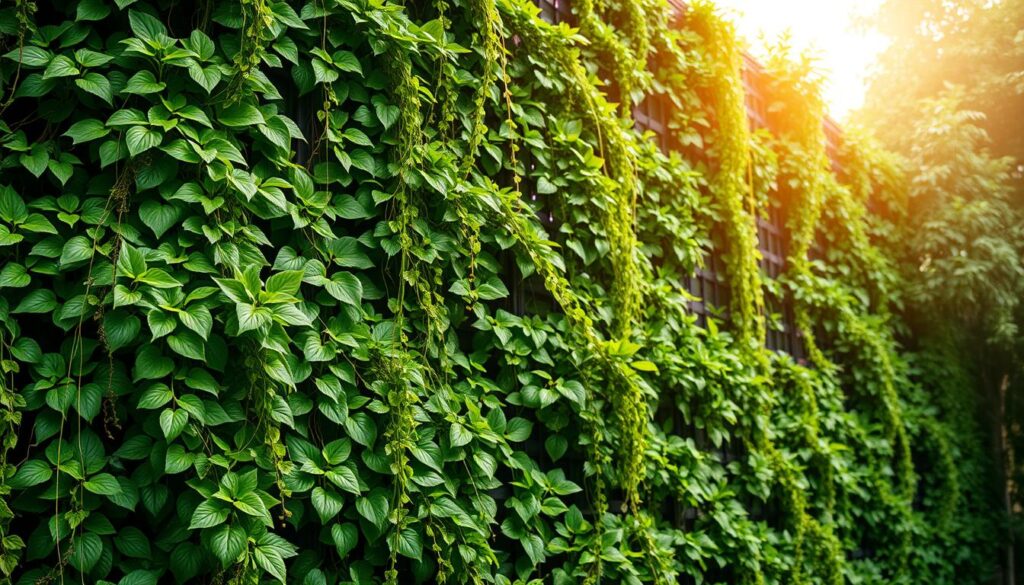
Initial Care After Planting
After planting, water your vertical garden wall thoroughly to settle the soil around the roots. Keep the soil consistently moist during the first few weeks after planting, as this will help the plants establish themselves. Monitor your plants for any signs of stress or disease, and be prepared to adjust your care routine as needed.
By following these steps, you’ll be well on your way to enjoying a thriving, beautiful vertical garden wall that enhances your space.
Maintaining Your Vertical Garden Wall
Maintaining a vertical garden wall requires attention to detail and a consistent care routine. To ensure your garden thrives, it’s essential to focus on several key maintenance tasks.
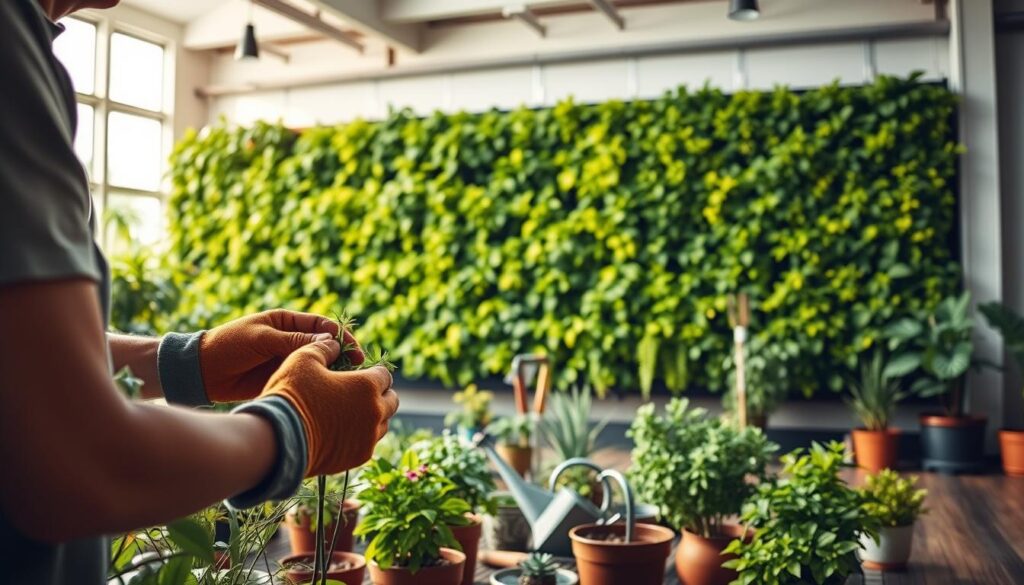
Watering Schedule and Techniques
A consistent watering schedule is vital for the health of your vertical garden. The frequency of watering depends on the type of plants, climate, and irrigation system in place. It’s crucial to monitor soil moisture and adjust your watering schedule accordingly.
Fertilizing and Nutrient Management
Fertilizing your vertical garden wall is necessary to replenish nutrients that plants consume over time. Use a balanced fertilizer suitable for the types of plants you’re growing, and follow the manufacturer’s instructions for application rates.
Pruning and Replacing Plants
Regular pruning helps maintain the appearance and health of your vertical garden. Remove dead or dying plants, and replace them with new ones to keep your garden looking its best. This also encourages new growth and prevents the spread of disease.
Conclusion
By following this step-by-step guide, you’re now equipped to create a stunning DIY vertical garden wall that not only enhances your living space but also contributes to a healthier environment. The benefits of vertical gardens, from space-saving solutions to environmental and health benefits, make them an attractive option for urban gardeners.
With your newfound knowledge, you can confidently plan and execute your vertical garden wall project. From selecting the perfect plants to setting up an efficient irrigation system, every detail has been covered to ensure your success. As you embark on this project, remember to be patient and enjoy the process of bringing your vision to life.
A well-designed DIY vertical garden wall can be a breathtaking addition to any home or office, providing a natural oasis in the midst of urban surroundings. So, take the first step towards creating your own vertical garden wall today and experience the joy of nurturing your plants and watching them thrive.



